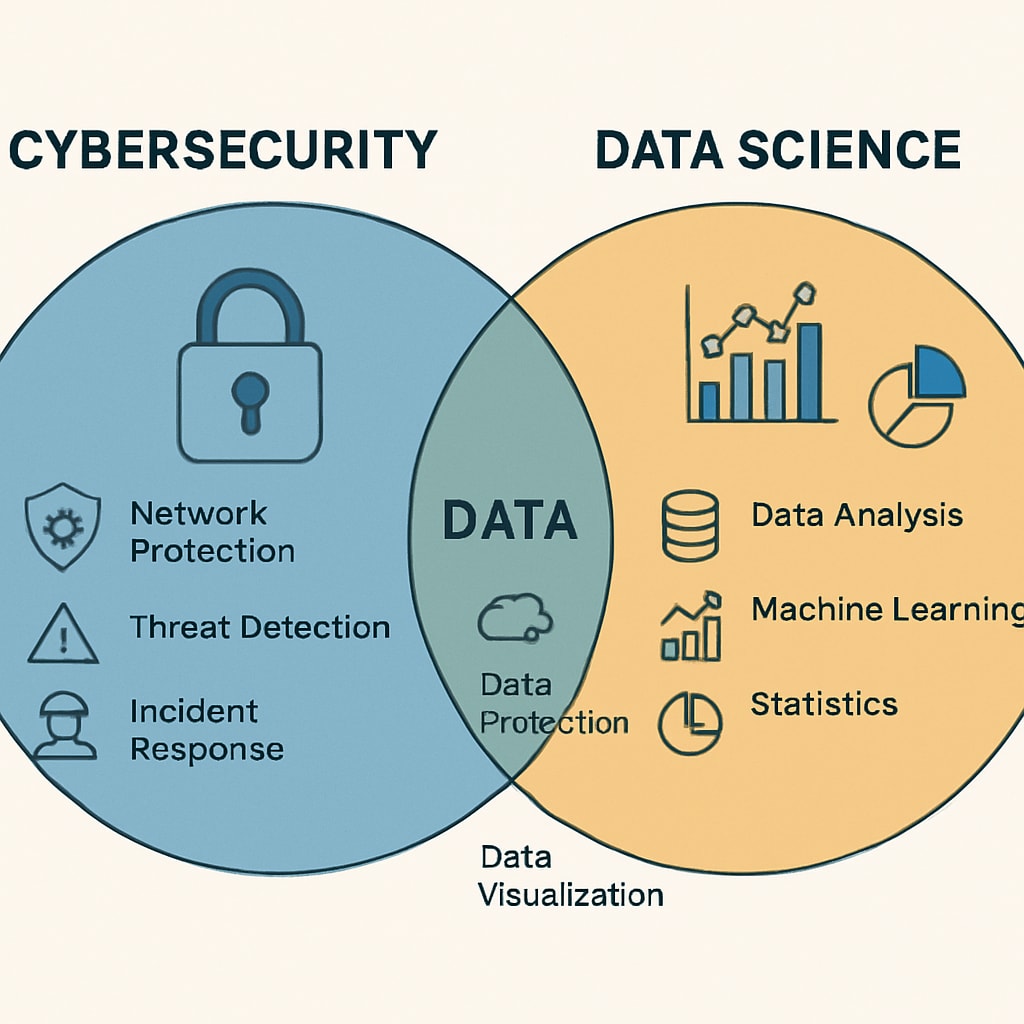In today’s rapidly evolving digital economy, choosing the right career path can be a daunting task. Among the most promising and in-demand professions are cybersecurity and data science. These fields not only offer competitive salaries but also provide significant opportunities for growth and innovation. As parents and educators, understanding these career paths and their requirements is essential to prepare K12 students for a successful future. This article explores the differences between cybersecurity and data science as career options, and highlights how K12 education can lay the groundwork for these exciting fields.
Understanding Cybersecurity and Data Science
Both cybersecurity and data science are pivotal in the digital age, but they serve distinct purposes. Cybersecurity focuses on protecting systems, networks, and data from cyber threats and breaches. Professionals in this field are tasked with ensuring the integrity, confidentiality, and availability of digital information. On the other hand, data science involves analyzing and interpreting complex data to derive actionable insights. Data scientists work at the intersection of technology and business, using algorithms, machine learning, and statistical methods to solve problems.
While both fields require technical expertise, their day-to-day responsibilities differ significantly. Cybersecurity professionals might monitor network traffic, respond to security incidents, or conduct vulnerability assessments. Data scientists, however, spend their time cleaning data, building predictive models, and visualizing results to support decision-making. These differences highlight the need for tailored educational approaches to prepare students for each field.

K12 Education: Building the Foundation
Early exposure to relevant skills and concepts is crucial for students who aspire to work in cybersecurity or data science. K12 education can play a transformative role in nurturing interest and developing foundational competencies. For cybersecurity, introducing topics like digital ethics, online safety, and basic cryptography can spark curiosity and awareness. Schools can also encourage problem-solving through activities like cybersecurity challenges or coding workshops.
In the case of data science, fostering mathematical literacy, logical reasoning, and data interpretation skills is key. Integrating tools like Python or introductory data analysis software into the curriculum can provide students with hands-on experience. Additionally, cross-disciplinary projects that combine math, science, and technology can help students understand the real-world applications of data science.
Furthermore, soft skills such as critical thinking, collaboration, and communication are equally important for success in these fields. These skills can be nurtured through group projects, debates, and presentations, preparing students for the collaborative nature of modern workplaces.

Cybersecurity vs. Data Science: Career Prospects and Work-Life Balance
When evaluating career options, understanding the job market and lifestyle implications is vital. Cybersecurity roles are in high demand due to the increasing frequency of cyberattacks. According to a report by the U.S. Bureau of Labor Statistics, information security analyst jobs are expected to grow by 35% between 2021 and 2031, much faster than the average for all occupations. Cybersecurity professionals often work in high-pressure environments, as they must respond quickly to threats and ensure system resilience.
In contrast, data science is also experiencing rapid growth, driven by the need for data-driven decision-making across industries. Data scientists enjoy diverse career opportunities, from healthcare to finance to technology. According to Britannica, the demand for skilled data scientists is outpacing supply, making it a lucrative option. While data scientists may face deadlines and project-based workloads, their work generally allows for more flexibility compared to cybersecurity roles.
Ultimately, the choice between cybersecurity and data science depends on individual interests, skills, and career aspirations. Those who enjoy solving puzzles and thrive under pressure may find cybersecurity fulfilling, while those with a passion for numbers and analysis may be better suited to data science.
Making the Right Choice
To help students make informed career decisions, it’s important to provide exposure to both fields during their formative years. Internships, mentorship programs, and extracurricular activities can offer valuable insights into the nature of these professions. Moreover, fostering a growth mindset and encouraging lifelong learning will empower students to adapt to the ever-changing demands of the digital economy.
In conclusion, cybersecurity and data science represent two of the most dynamic and rewarding career paths in the digital age. By leveraging K12 education to build foundational skills, educators and parents can guide students toward informed career choices that align with their interests and strengths. Whether they choose to protect data or analyze it, the future is bright for those equipped to thrive in the digital economy.
Readability guidance: This article balances technical insights with accessible language, ensuring clarity for a broad audience. Short paragraphs, lists, and consistent use of transition words enhance readability.


